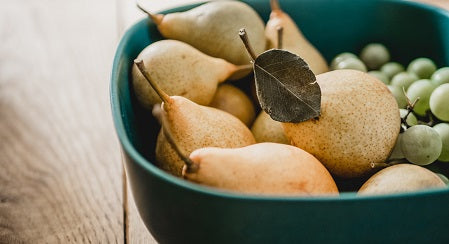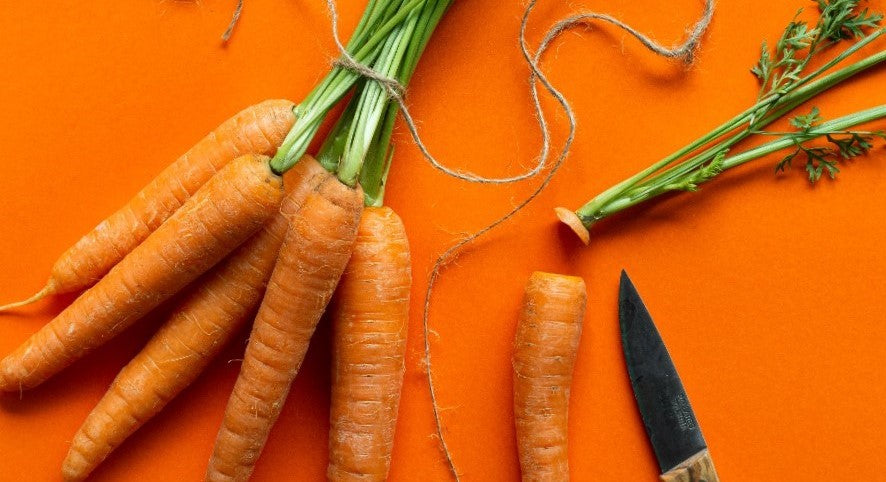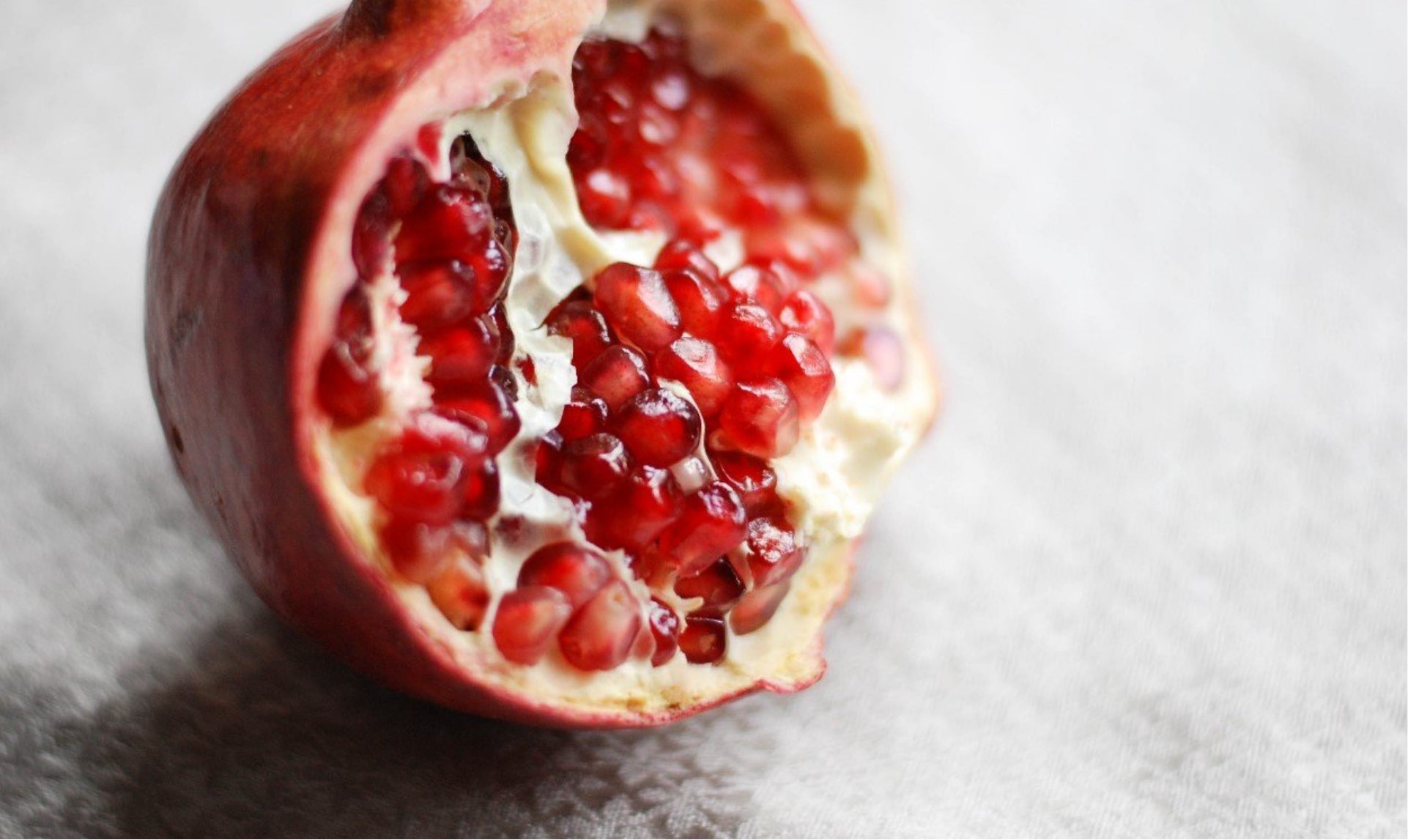
Bien-être 08/11/2020
Faites la part belle aux fruits et légumes de cette fin d’automne !
Pour affronter les baisses de température, la gourmandise est de mise. Toujours généreuse, la nature nous offre des fruits et des légumes pour chaque moment de l’année, adaptés aux besoins de notre organisme. En novembre, il est encore possible de profiter de quelques légumes automnaux comme les courges, les champignons, les brocolis ou les choux-fleurs. En décembre, les stars incontestées sont les légumes racines, tels que les carottes, topinambours, navets, betteraves, salsifis, mais aussi oranges, mandarines et clémentines. Un grand choix sur les étals pour faire le plein de vitamines et d’antioxydants avant l’arrivée de l’hiver. Sous la loupe : le topinambour, la châtaigne, la poire et la noix. Pour vous mettre l’eau à la bouche.
Le topinambour, trop longtemps oublié
Artichaut de Jérusalem, Artichaut d’hiver, Poire de terre, Soleil vivace ou encore Truffe du Canada, le topinambour ne manque pas de sobriquets. Originaire d’Amérique du Nord, ce tubercule de couleur brun-rosé offre une saveur fine et douce proche de celle de l’artichaut. Le topinambour, qui a remplacé la pomme de terre durant la Seconde Guerre mondiale, fut longtemps oublié. Mais cette racine aux multiples vertus séduit aujourd’hui les palais, et son retour sur les étals d’octobre à février est un moment très attendu.
Facile à cuisiner, le topinambour se consomme aussi bien chaud que froid, mais toujours cuit : dans l’eau bouillante salée, au four, à la poêle ou à la vapeur. Les fins connaisseurs le cuisent à l’étuvée, car c’est ainsi que ses arômes ressortent le mieux. Avant d’utiliser le topinambour, épluchez-le de la même façon qu’une pomme de terre. Comme il s’oxyde rapidement, plongez-le dans de l’eau citronnée. Vous pouvez également le consommer avec la peau. Il suffit simplement de le brosser afin de le nettoyer.
En version simple, le topinambour se contente d’une noix de beurre ou d’un mélange de persil, échalotes hachées et moutarde. Mais il se prête aussi à des préparations plus élaborées. Il entre par exemple dans la confection de gratins, de flans, de purées ou de soupes. Il accompagne les viandes blanches et est délicieux avec des produits raffinés comme le foie gras ou la noix de Saint-Jacques. Le topinambour se marie particulièrement bien avec des noisettes grillées, arrosé d’un filet d’huile de noisette. Vous pouvez également le faire rôtir au four après l’avoir coupé en bâtonnets, badigeonné d’huile d’olive et assaisonné de sarriette ou de thym. Ou encore le faire sauter dans un wok à la manière chinoise.
Les plus gourmands lui ont même imaginé une version sucrée. Cuit en papillote et garni de fruits secs et d’épices, ou simplement nappé de sirop d’érable et de cannelle, le topinambour aime aussi être apprêté en soufflé, en crème ou en gâteau.
Atouts santé: Le topinambour constitue une excellente source de minéraux (potassium, phosphore, magnésium) ainsi que d’oligoéléments (fer, cuivre, zinc). Il contient des vitamines du groupe B, des glucides et des fibres. C’est un aliment très intéressant dans un régime minceur, car sa densité calorique est faible, son index glycémique modéré et son pouvoir satiétogène élevé.
Contrairement à la pomme de terre, le topinambour ne contient pas d’amidon mais de l’inuline, un glucide spécifique non assimilable. Ces fructanes sont par ailleurs utiles chez les diabétiques, car ce type de glucides n’influence pas la glycémie. Ce légume à forte concentration d’inuline réduirait donc le risque de diabète et le taux de mauvais lipides sanguins. Il augmenterait l’absorption de certains minéraux (notamment le calcium et le magnésium) et éloignerait le risque de cancer du côlon.
Astuce : Consommé juste après avoir été récolté, le topinambour risque de provoquer des maux de ventre et des ballonnements. Il est donc préférable de le cuisiner quelques jours après sa récolte.
Notre recette gourmande: Topinambour au four ail et thym
La châtaigne, comme une friandise
Compagnon de l’hiver et des périodes de fêtes, la châtaigne agrémente nos plats de sa douceur tout en nous offrant ses nombreuses qualités nutritives. Originaire d’Asie Mineure, le châtaigner a toujours été considéré comme un arbre nourricier. Ses fruits énergétiques constituaient un aliment de base pour certains peuples d’Europe vivant dans les montagnes, là où les céréales ne poussaient pas. Petit à petit, la châtaigne a perdu ce statut pour devenir aujourd’hui un vrai régal de saison.
En cuisine, la châtaigne se décline aussi bien en version sucrée que salée et offre de multiples modes de préparations. On peut bien sûr la déguster nature, en la cuisant 30 minutes dans l’eau bouillante ou en la faisant griller au four pendant 20 minutes à 200°. Mais toujours après avoir incisé la peau. La châtaigne se complaît aussi en purée, soupe ou velouté. Elle se marie très bien avec tous les légumes d’automne : potirons, carottes, champignons, choux et même lentilles corail. Sa saveur légèrement sucrée s’accorde avec du poisson, de la volaille, du gibier, du bacon, des fromages rustiques, ou du foie gras pour un met festif.
Mais la châtaigne évoque surtout les desserts. Elle se marie délicieusement bien aux agrumes (orange, kumquat), dont l’acidité permet un équilibre idéal. Avec des pommes, des poires ou du chocolat noir, c’est un régal. La châtaigne fait également de douces confitures et ses brisures sucrées accompagneront cheesecake, crème ou pana cotta. La châtaigne produit également une farine à la saveur sucrée et dépourvue de gluten, idéale pour la confection de pain, galettes, crêpes, muffins ou gâteaux. Enfin, le miel de châtaignier : ingrédient incontournable du pain d’épice qui donnera une saveur unique à vos recettes.
Atouts santé: Riche en glucides et en fibres, la châtaigne est une excellente source de minéraux et d’oligoéléments : calcium, fer, potassium, magnésium, phosphore et cuivre. Ses vitamines C et E lui apportent des vertus antioxydantes, et la présence de vitamines du groupe B (particulièrement la vitamine B1) permet une excellente assimilation de ses glucides par l'organisme. La châtaigne contient également des caroténoïdes et de la vitamine A. Sa richesse en amidon « résistant », c’est-à-dire digéré lentement et incomplètement, permet de remplir l’estomac sans entraîner de pic de glycémie. D’où son intérêt dans la prévention des maladies métaboliques, telles que le diabète, l’hypercholestérolémie et l’obésité. De plus, la châtaigne bien cuite est tolérée par les intestins fragiles.
Astuce: Châtaigne ou marron ? Telle est la question. Nous avons l’habitude de manger de la dinde aux marrons, de la crème de marrons, des marrons chauds ou des marrons glacés. En réalité, les marrons que nous avalons avec gourmandise sont des châtaignes. Alors que la châtaigne provient du Châtaignier, le marron est issu du Marronnier d’Inde et est un fruit toxique. Pour faire la différence, fiez-vous à la bogue : celle de la châtaigne est recouverte de davantage de piques que celle du marron, et elle contient trois châtaignes séparées par des membranes, alors que celle du marron ne contient qu’un seul fruit.
Notre recette gourmande: Pancake à la farine de châtaigne, marrons glacés et sirop d’érable
La poire, si raffinée
Fruit originaire d’Asie centrale, la poire est à déguster toute l’année mais à privilégier dès l'automne pour accroître ses défenses naturelles. Rafraîchissante, sucrée, fondante et légèrement granuleuse, elle est vertueuse pour notre santé et peut être consommée de multiples façons. Elle se décline en milliers de variétés, de formes et de couleurs, mais pour la période automnale il faudra choisir la beurré Hardy (peau rugueuse, chair ferme et sucrée), la Conférence (peau épaisse et plutôt acidulée), la Louise Bonne (chair ferme, sucrée et parfumée), la Général Leclerc (chair fine, tendre, juteuse, au parfum épicé), et la Comice (chair fondante, juteuse, sucrée et acidulée).
Fruit de table, la poire peut être dégustée à tout moment de la journée. Elle apportera ainsi son plein potentiel de nutriments. Dans sa version apprêtée, la poire fera des merveilles aussi bien en version sucrée que salée. En salade avec d’autres légumes, elle apporte une touche de fraîcheur et d’acidité. Elle est excellente avec de la mâche, des endives ou de la betterave rouge. En compotée ou rôtie, elle est parfaite en accompagnement d’une volaille, de gibier ou d’un poisson. Laissez-vous surprendre par son alliance avec un fromage de brebis, du roquefort ou du jambon cru.
En dessert, la poire fait aussi tout son effet. Crue et coupée en morceaux, elle complète les salades de fruits. Vous pouvez la parfumer avec des herbes aromatiques comme de la menthe, mélisse ou verveine. Cuite ou pochée, elle est excellente avec de la vanille, des zestes d’orange ou de citron, du miel, des épices (gingembre, cannelle, badiane, cardamome), du chocolat ou du vin rouge sucré. Elle est particulièrement savoureuse avec des noix, amandes ou noisettes. La poire se cuisine aussi en tarte, gâteau, clafouti, compote, crumble, sorbet, confiture et gelée. Enfin, n’oubliez pas de la déguster en jus !
Atouts santé: Hypocalorique malgré son goût très sucré, la poire est un fruit riche en eau qui a le pouvoir de rafraîchir et de désaltérer. Sa richesse en minéraux (potassium, calcium, magnésium), oligoéléments et tanins aide l'organisme à dissoudre et éliminer l'acide urique, surtout lorsque le fruit est consommé avec la peau. La poire est donc bénéfique pour les rhumatisants et les personnes souffrant d'arthrite. Son taux élevé d'acide folique renforce l’appareil cardiovasculaire et joue un rôle essentiel dans le bon fonctionnement neuromusculaire. La poire contient également des acides phénoliques et flavonoïdes, puissants antioxydants qui stimulent les globules blancs, boostant ainsi le système immunitaire. Généreuse en vitamines A, B, C et E, la poire est également une bonne source de pectine qui favorise l'élimination du cholestérol et stimule les fonctions du côlon.
Astuce: Fragile, la poire se conserve à température ambiante, séparée des autres fruits tels que les pommes, les avocats ou les bananes, qui peuvent accélérer sa maturation.
Notre recette gourmande: Tarte au chèvre et aux poires
La noix, l’oléagineux de l’automne
Le noyer fait partie des sources alimentaires les plus anciennes de la Terre. Dès l’âge de pierre, les hommes la consommaient déjà. Aujourd’hui, elle occupe le deuxième rang des fruits secs les plus consommés dans le monde. Récoltée dès la mi-septembre, elle a l’avantage de pouvoir se grignoter toute l’année. En plus d’être savoureuse, la noix est particulièrement riche en nutriments, protéines, fibres, antioxydants et bons gras.
Pour bénéficier de ses bienfaits, il est préférable de la consommer crue et nature. Les préparations grillées ou caramélisées n’ont en effet aucun intérêt nutritionnel. Sous forme de petits en-cas, la noix apporte de l’énergie à notre cerveau. Pour grignoter malin lorsque vous avez une petite faim, n’hésitez pas à la mélanger à des raisins secs, amandes et noisettes. Apprêtée, la noix permet de rehausser le goût des plats. Ajoutée à des salades, elle appréciera particulièrement les endives, les jeunes feuilles d’épinards, la mâche, la betterave, les pommes ou les agrumes, mais aussi le roquefort ou le bacon. Elle peut servir de base pour un pesto avec des pâtes ou du poisson. Ce fruit agrémente également le riz, les farces de volaille ainsi que les soupes.
Du côté des desserts, la noix se cuisine à merveille avec la poire (au four, farcie de noix et arrosée de miel), dans les cakes, les muffins, sur les tartes aux fruits pour plus de croquant, dans du muesli ou du pain. Le vin de noix et les cerneaux de noix sont un bel alliage pour un apéritif. Enfin, n’oubliez pas l’huile de noix, très parfumée et un peu sucrée : pour l’assaisonnement de vos salades, légumes vapeur, ou simplement sur une tranche de pain aux noix accompagnée de figues fraîches.
Atouts santé: La noix est riche en acides gras polyinsaturés, notamment en oméga-3 et oméga-6. Ces acides gras sont essentiels pour le corps humain, car celui-ci n’est pas capable de les produire lui-même. Ils ont une action bénéfique sur le système cardiovasculaire, en régularisant le taux de lipides dans le sang. Sa forte concentration en arginine, un acide aminé essentiel, participe à la dilatation et à l’élasticité des parois vasculaires, favorisant ainsi une meilleure circulation sanguine. La noix contient aussi des composés phénoliques qui agissent comme des antioxydants. Ce sont principalement l'acide ellagique et l'acide gallique, des substances qui neutralisent les radicaux libres et protègent l'organisme contre les maladies chroniques.
La noix est également une excellente source de minéraux et d’oligoéléments indispensables à l’équilibre nutritionnel : manganèse, phosphore, magnésium, fer, zinc, cuivre et potassium. Sa richesse en vitamines B1 et B6 favorise la production d’énergie ainsi que le bon fonctionnement des systèmes nerveux et neurologiques. Enfin, sa grande teneur en fibres fait de la noix un allié des transits paresseux.
Astuce: Sous l’Antiquité, on pensait qu’en raison de sa forme la noix était bonne pour le cerveau. Et ce n’était pas faux ! Des chercheurs californiens ont d’ailleurs publié en 2018 une étude sur les bienfaits de la noix sur notre activité cérébrale.
Notre recette gourmande: Crumble pommes-noix




